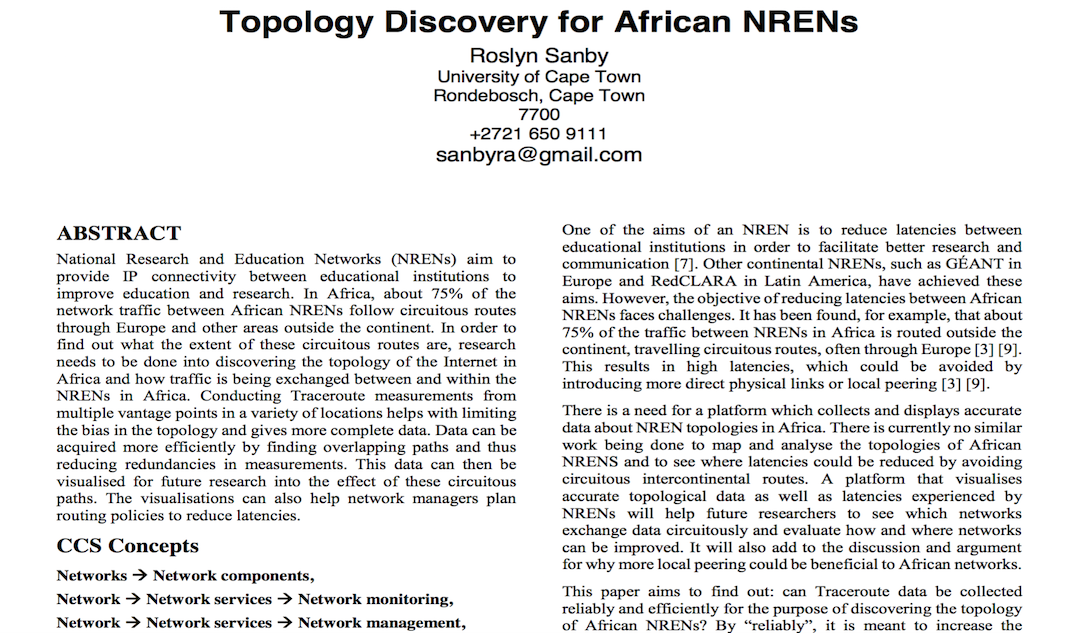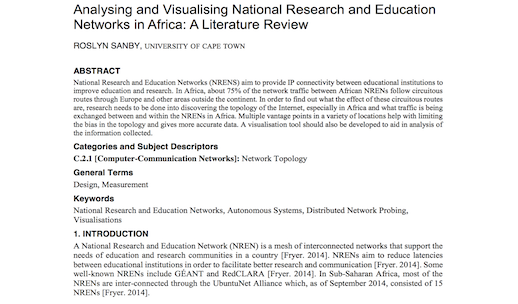Methodology
Using the RIPE Atlas platform, Traceroute measurements were conducted from 12 vantage points to 50 destination IP addresses within the UbuntuNet Alliance as displayed in Figure 1. Probes are represented by blue diamonds while destinations are represented by circles. The protocols ICMP, TCP and UDP were used. Since some protocols are blocked by firewalls on routers, all three protocols were used to discover the most complete topology.
The experiment was initially run three times in an attempt to find as many paths as possible from each source to each destination. Routing and load balancing can provide a diverse set of paths depending on the congestion of the network and how packets were subsequently routed at a particular time, which is why the experiment was run more than once. Three full measurements were conducted from each probe to each target IP address using each of the three protocols. The paths of these measurements were analysed to find overlaps. Once this had been completed, three more sets of Traceroute measurements were run for each protocol where first hops and last hops were changed where necessary.
A summary of the main findings are presented below. For a full discussion of these results as well as conclusions drawn, please consult the full report at the bottom of this page.

